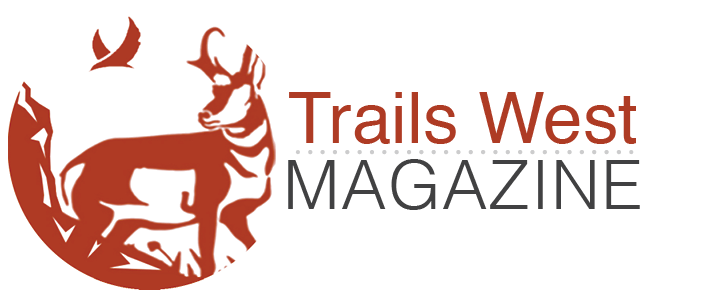| TRAVEL |
Human beings are a stories species. In the shadow of the Scotts Bluff National Monument rest North Platte Valley’s premiere destination for information on the panhandle of Nebraska.
Article by: Irene North
Photography by: Hawk Buckman
The museum is the culmination of joining two former museums, the North Platte Valley Museum, and the Farm and Ranch Museum. The merger between museums has created a place that has something for everyone.
You might care about appliances of the house, said David Wolf, executive director. But you might be interested in ranches or horses or farming.
One of Wolf’s job perks is taking visitors to the back of the main building and into the museum. You get to see their eyes light up, he said. They don’t expect a modernly designed museum. Visitors traverse a modern layout with more than a century of history to explore. Visitors can explore what interests them, from the main building to the outlying historic buildings.
Wolf said previous directors set the museum up to be one of the best in the state when they merged the two museums and modernized the exhibits. When I took this job, I said the hard part’s already done, Wolf said. They figured out what exhibits were needed and how it needed to be laid out. The modern, non-linear path allows visitors to decide where they go and what they want to see next.

Online reviews bear out what Wolf has seen in person. Reviews come with four or five stars. When a negative review does come up, it always seems to be one of the times. Wolf said the only complaints I’ve heard were people saying they didn’t have enough time to see everything. They say it’s too big to see in an hour.
Visitors can also walk through the Weideman and Gentry family homes and see what homes were like during each era.
You can go through the Weideman house and see the TV and explain it had knobs to turn the channel, and we only had a few tracks, he said. In the Gentry cabin, you see the icebox and learn how it works. Wolf said the homes are essential for youth to know about and see what life was like then.
He said that when you get away from just reading about it and get involved, the more apt you are to be interested in it.
The museum also has a rotating gallery that is free to the public. In the past year, it has hosted the Smithsonian’s Water Way project, a Veteran’s Day memorial of residents, area history and uniforms, a 100th anniversary World War I exhibit, and a history of horse racing in western Nebraska.

Photography by © 2020 Hawk Buckman
Although the rotating gallery is free, Wolf said it is advantageous for the rest of the museum. If we showed them it, there is a greater chance than not they will pay for admission, he said.
Wolf has many ideas he is working on to make the museum more fun than it already is. One of his ideas is to do more living history, with volunteers dressed in period costumes to help visitors as they experience the exhibits.
Another idea Wolf is working on is to make the museum more photogenic with Instagram displays or exhibits so visitors can post pictures on social media. We have become a society of taking pictures, he said.
Wolf also wants to expand the reach of the museum than just its physical footprint. Wolf knows teachers who grew up in the area but now live elsewhere in the country and have expressed a desire to somehow connect with the museum. Wolf hopes to incorporate some virtual classrooms soon. These requests show how connected we’ve become, he said. It’s a great way to get our message, history, and artifacts to a whole group of people who would have never seen it.
Wolf said one of the draws to the museum is that it gets adults and youth to view history without the need for a book. He sympathizes with history teachers who have always been creative in keeping their students interested in history without reading a textbook. Wolf said that history is the hardest to teach because you can’t always bring history to you. And that’s what we want to do.
When Wolf arrived at the museum, he inherited an ongoing project to move the Japanese Hall from Scottsbluff to the museum property. He looked forward to the day in December 2019 when the hall finally arrived at its new home. It’s another piece of (local) history that can attract people, he said. It’s something few other people have. Wolf returns to his idea that the Legacy of the Plains Museum has something for everyone. The Japanese Hall is another piece in that puzzle.
Whether it’s the Japanese moving out of the area or intermarrying and their names aren’t as prominent anymore, it’s a piece of our history that is being slowly forgotten in this area, he said. In addition to the Japanese history in the Panhandle, the museum boasts exhibits on Native Americans and Germans from Russia.
Wolf would also like to incorporate some lesser prominent settlers, including Swedish settlements, Hill, a colony of Civil War veterans, and Empire, a former African-American settlement in the early 20th century.

Wolf encourages everyone, whether visitors or residents, to come and see our story. No matter what we think, whether it’s someone who moved here recently or is someone like Dr. Don Gentry, whose family came here in 1887, you’re still impacted by the legacy here, Wolf said. And you are impacting the legacy that is here, and that will be.
Wolf said he thinks people enjoy reality television because they can identify with them. Lord of the Rings is cool. It’s a great story, but we’ve never seen an elf, he said. With reality TV, we know people like them. It’s the stories that attract people. The Legacy of the Plains Museum is telling our story. Wolf said there are so many lessons you can learn just by going out and visiting museums and parks to get an appreciation for what we have. Ultimately, we are cultivating history lovers for the rest of their lives.
The Legacy of the Plains Museum isn’t just a story about our area. This is our story. Wolf said whether you moved here yesterday or not, this is your story. It’s a never-ending book, and we keep adding to it.

Photography by © 2019 Hawk Buckman
| REFERENCES
The information in this article has been compiled from the following:
- Personal interviews with David Wolf
- Legacy of the Plains Museum – Gering, Nebraska










